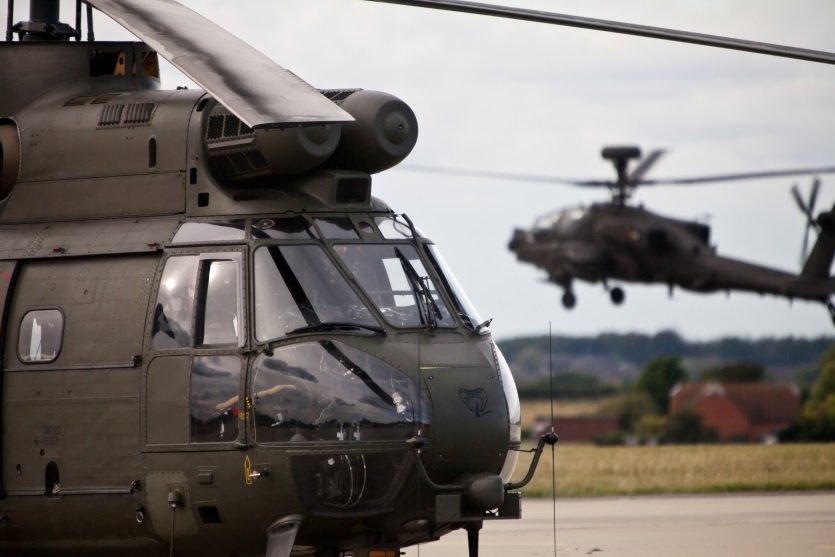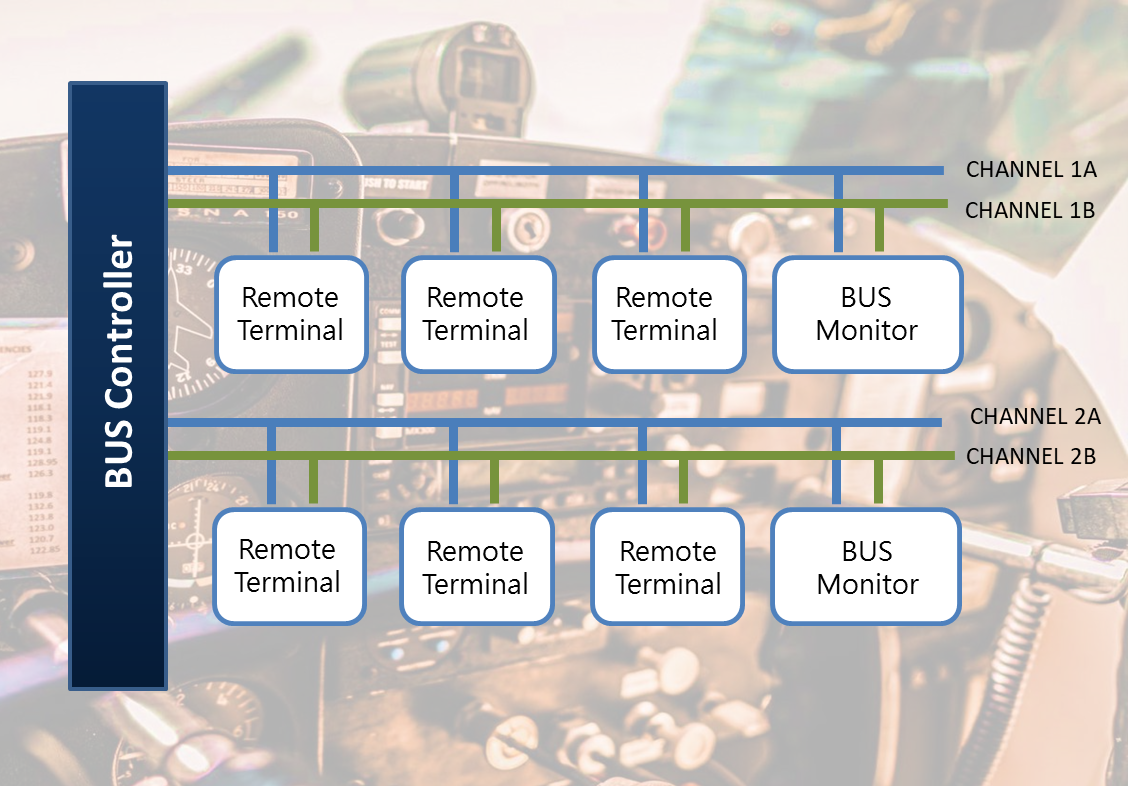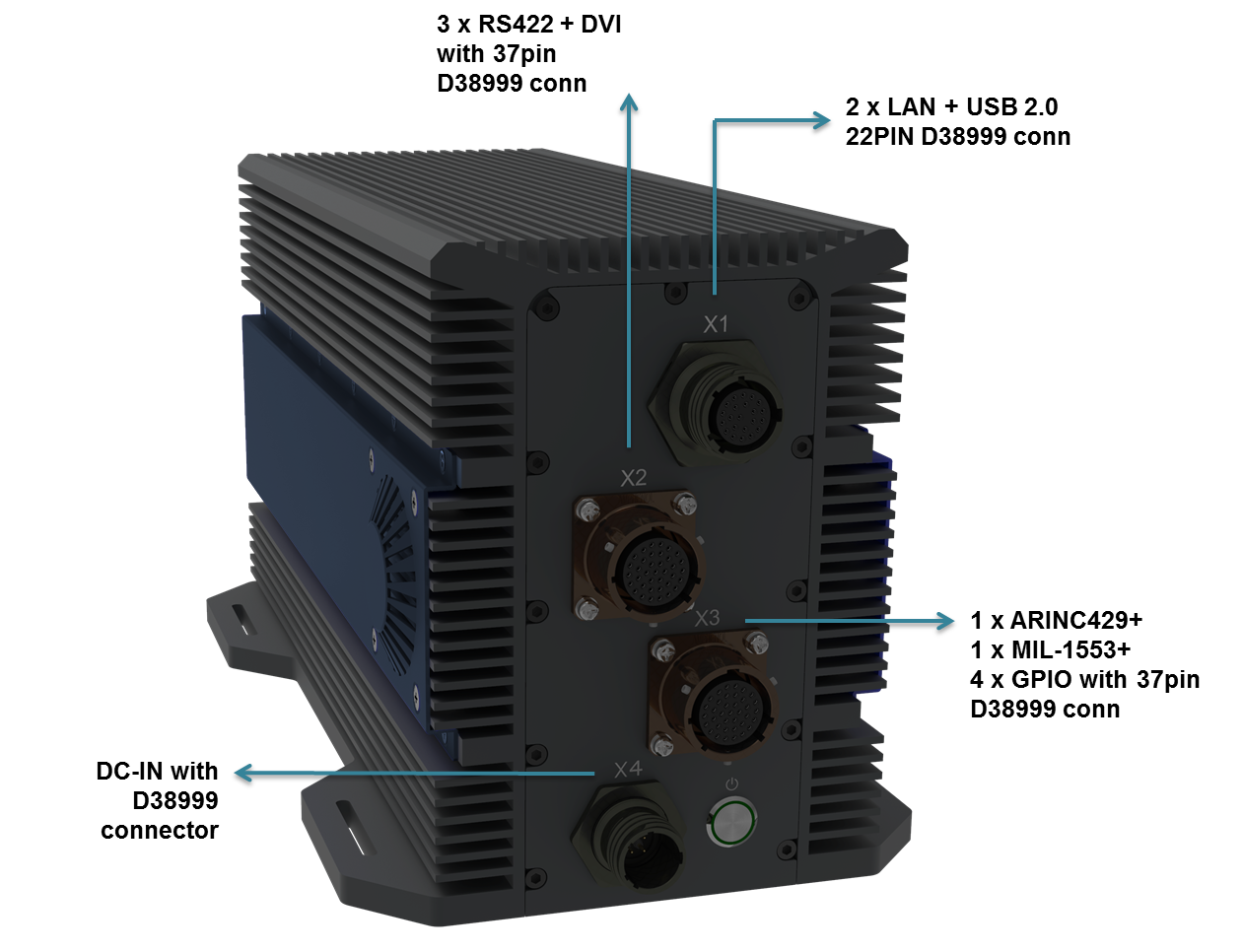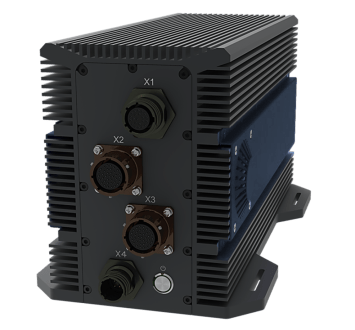F20-THT
3/4 Short ATR
- IP65 Air Borne Mission Computer
- 11th Gen Intel® Xeon® W-11865MRE (8C,16T) 4.7Ghz
- Dual Redundant (A/B) MIL-STD-1553 Channels
- 6 Channels of ARINC-429
- Memory Up to DDR4-96GB
- NVMe 64GB Soldered On Board
- NVIDIA MXM- RTX™ A4500, 16GB GDDR6 , 5888 CUDA
- Extreme Temperature -40~+60 Degree
- MIL-461 18V~36V DC Input, Options for MIL-704/1275 10V~40V DC
- MIL-STD 810 509 Salt Fog Conformal Coating
- MIL-STD 810 500.6 Low Pressure (50,000 ft) Altitude

- Technical Profile
- Specifications
- Order Information
- Download
- Introduction
-
ATR (Air Transport Rack) is a standard that specifies form fit and function of enclosures designed to protect the main internal system. This military enclosure must meet EMI / EMC requirements to prevent noise interference, provide lightning protection and be isolated from small particle contaminants. So, it can be deployed in unmanned aerial vehicles, fighters, and helicopters. To satisfy diverse conditions, ATR chassis are available in different sizes—1/2, 3/4 and Full ATR sizes.
F20-THT is an Air-Borne Mission GPU Computer that was designed to meet ATR 3/4 short size. F20-THT is built to withstand harsh environment by comply with MIL-STD 810 to sustain 75G shock and 10G vibration.

- Block Diagram

- ARINC 429
-
ARINC 429 is the worldwide standard for data transmission in aircraft electronics. It is adopted mostly for commercial aircraft and transport aircraft network protocol standard. Communications, guidance, altitude, altitude reference, flight management, and more are all needed to work together to accomplish a successful flight. The physical connection wires are twisted pairs carrying balanced differential signaling.
The ARINC 429 unit of transmission is a fixed-length 32-bit frame, which the standard refers to as a 'word'. The bits within an ARINC 429 word are serially identified from Bit Number 1 to Bit Number or simply Bit 1 to Bit 32.

- MIL-STD-1553
-
MIL STD 1553 is US Military Department of Defence standard that was initially published in 1973.
MIL STD 1553 is a differential serial bus. Also, it is a dual redundant data bus. Each node is connected to each of the redundant buses. Secondly, if one should fail, communications can still continue.
There are three types of operating nodes for 1553 Bus:
•A Bus Controller initiates all messages, traffic and commands the remote terminals to transmit/receive data.
•Remote Terminal interfaces the 1553 Bus and Sub System Bridge to other 1553 Buses. It responds to the bus controller.
•The Bus Monitor listens to messages and records them.

- MIL-STD-810 & Full IP65 protection
-
F20-THT is designed to meet strict SWaP requirements and to withstand harsh environments, including extreme temperature, shock/vibration, sand/dust, and salt/fog. With ruggedized design and high functionality, the IP65 and MIL-STD resistance F20-THT is the ideal tactical vehicle on the battlefield.


|
System |
||
|---|---|---|
|
High Power Processor |
Xeon W-11865MRE (8 Cores/16 Threads, 24M Cache, up to 4.70 GHz), 45W |
|
|
Memory type |
Support up to DDR4-96GB |
|
|
Chipset |
RM590E |
|
|
Storage |
NVMe 64GB Soldered On Board |
|
|
GPU |
NVIDIA® MXM RTX™ A4500, 16GB GDDR6 memory, 5888 CUDA cores |
|
|
ARINC 429 (optional) |
6 Channels of ARINC-429 Channels: 4 RX/TX and 2 RX Only Channels. w/ mini-PCIe |
|
|
MIL -1553(optional) |
1-2 INDEPENDENT, DUAL REDUNDANT (A/B) MIL-STD-1553 CHANNELS w/ mini-PCIe card (Alta-dt MPCIE2-1553) |
|
|
TPM |
TPM 2.0 (SLB9665) |
|
|
BIOS |
AMI SPI 256Mbit |
|
|
COM |
2x RSRS232 |
|
|
USB |
2x USB2.0 |
|
|
Ethernet NIC1(optional) NIC2(optional) |
Intel I225 series (10/100/1000Mbps/2.5G) 2x 10G(SFP+) 2x 10G (RJ45) |
|
|
Power Type |
18V ~ 36V DC IN |
|
|
Storage |
1x 2.5” SATA SSD |
|
|
Frame Grabber Type |
HD-SDI or 3G-SDI, (2x CH) |
|
|
Operating Temperature |
-40°C to 60°C |
|
|
Dimension |
190.50(W) x 320.50(L2) x 269.88(H) mm |
|
|
FRONT I/O |
|
|
|
X1 |
1x 10G LAN |
|
|
X2 |
1x 10G LAN |
|
|
X3 |
1x 2.5G LAN |
|
|
X4 |
2x USB + 1x DVI + 2x COM |
|
| X5 | DC IN with D38999 connector | |
| X6~X7 | BNC | |
| Valve | 1x Waterproof valve | |
|
Environmental |
|
|
|
MIL-STD-810 Test |
Method 500.5, Procedures I and II (Altitude, Operation): 12,192M, (40,000 ft) for the initial cabin altitude (18.8Kpa or 2.73 Psia) Method 500.5, Procedures III and IV (Altitude, Non-Operation): 15,240, (50,000 ft) for the initial cabin altitude (14.9Kpa or 2.16 Psia) Method 501.5, Procedure I (Storage/High Temperature) Method 501.5, Procedure II (Operation/High Temperature) Method 502.5, Procedure I (Storage/Low Temperature) Method 502.5, Procedure II (Operation/Low Temperature) Method 503.5, Procedure I (Temperature shock) Method 507.5, Procedure II (Temperature & Humidity) Method 514.6, Vibration Category 24/Non-Operating (Category 20 & 24,Vibration) Method 514.6, Vibration Category 20/Operating (Category 20 & 24,Vibration) Method 516.6, Shock-Procedure V Non-Operating (Mechanical Shock) Method 516.6, Shock-Procedure I Operating (Mechanical Shock) |
|
|
Reliability |
No Moving Parts; Passive Cooling. Designed & Manufactured using ISO 9001 Certified Quality Program. |
|
|
EMC |
MIL-STD-461 : CE102 basic curve, 10kHz - 30 MHz RE102-4, (1.5 MHz) -30 MHz - 5 GHz RS103, 200 MHz - 3.2 GHz, 50 V/m equal for all frequencies EN 61000-4-2: Air discharge: 8 kV, Contact discharge: 6kV EN 61000-4-3: 10V/m EN 61000-4-4: Signal and DC-Net: 1 kV EN 61000-4-5: Leads vs. ground potential 1kV, Signal und DC-Net: 0.5 kV CE and FCC |
|
| Attachment | Size |
|---|---|
| US20160231790A1 - PCI-104_0_0.pdf (1.14 MB) | 1.14 MB |

